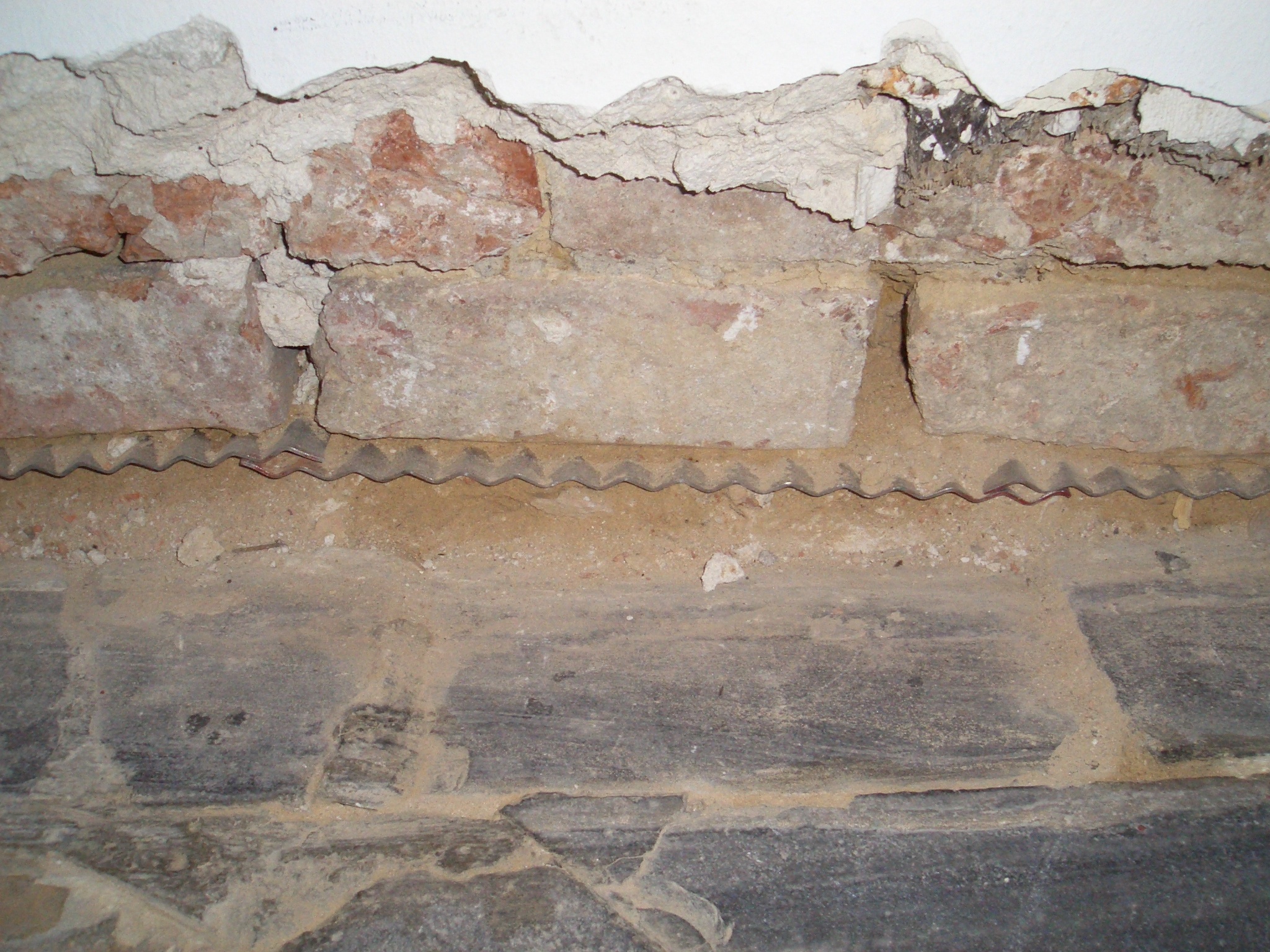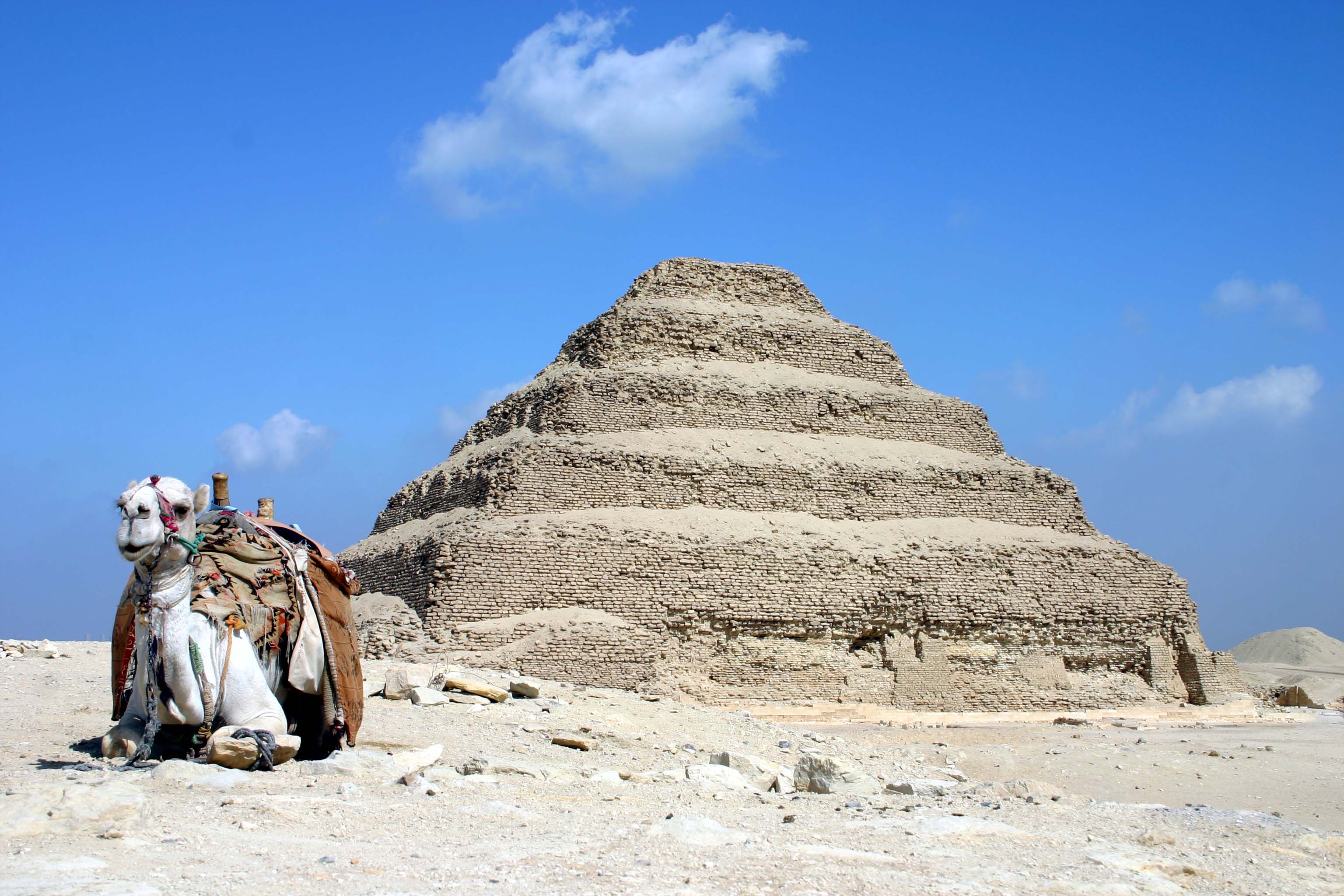|
Water Table (architecture)
A water table is a projection of lower masonry on the outside of a wall slightly above the ground. It is both a functional and architectural feature that consists of a projection that deflects water running down the face of a building away from lower courses or the foundation. A water table may also be primarily decorative, as found near the base of a wall or at a transition between materials, such as from stone to brick A brick is a type of block used to build walls, pavements and other elements in masonry construction. Properly, the term ''brick'' denotes a block composed of dried clay, but is now also used informally to denote other chemically cured cons .... The top of the water table is often sloped or chamfered to throw off water. Often a damp course is placed at the level of the water table to prevent upward penetration of ground water. References Bibliography * External links Architectural elements Architectural design Drainage {{Architectu ... [...More Info...] [...Related Items...] OR: [Wikipedia] [Google] [Baidu] |
Masonry
Masonry is the building of structures from individual units, which are often laid in and bound together by mortar; the term ''masonry'' can also refer to the units themselves. The common materials of masonry construction are bricks, building stone such as marble, granite, and limestone, cast stone, concrete blocks, glass blocks, and adobe. Masonry is generally a highly durable form of construction. However, the materials used, the quality of the mortar and workmanship, and the pattern in which the units are assembled can substantially affect the durability of the overall masonry construction. A person who constructs masonry is called a mason or bricklayer. These are both classified as construction trades. Applications Masonry is commonly used for walls and buildings. Brick and concrete block are the most common types of masonry in use in industrialized nations and may be either load-bearing or non-load-bearing. Concrete blocks, especially those with hollow cores, offer va ... [...More Info...] [...Related Items...] OR: [Wikipedia] [Google] [Baidu] |
Architecture
Architecture is the art and technique of designing and building, as distinguished from the skills associated with construction. It is both the process and the product of sketching, conceiving, planning, designing, and constructing buildings or other structures. The term comes ; ; . Architectural works, in the material form of buildings, are often perceived as cultural symbols and as works of art. Historical civilizations are often identified with their surviving architectural achievements. The practice, which began in the prehistoric era, has been used as a way of expressing culture for civilizations on all seven continents. For this reason, architecture is considered to be a form of art. Texts on architecture have been written since ancient times. The earliest surviving text on architectural theories is the 1st century AD treatise '' De architectura'' by the Roman architect Vitruvius, according to whom a good building embodies , and (durability, utility, and beauty). ... [...More Info...] [...Related Items...] OR: [Wikipedia] [Google] [Baidu] |
Course (architecture)
A course is a layer of the same unit running horizontally in a wall. It can also be defined as a continuous row of any masonry unit such as bricks, concrete masonry units (CMU), stone, shingles, tiles, etc. Coursed masonry construction arranges units in regular courses. Oppositely, coursed rubble masonry construction uses random uncut units, infilled with mortar or smaller stones. If a course is the horizontal arrangement, then a wythe is a continuous vertical section of masonry one unit in thickness. A wythe may be independent of, or interlocked with, the adjoining wythe(s). A single wythe of brick that is not structural in nature is referred to as a masonry veneer. A standard 8-inch CMU block is exactly equal to three courses of brick. A bond (or bonding) pattern) is the arrangement of several courses of brickwork. The corners of a masonry wall are built first, then the spaces between them are filled by the remaining courses. Orientations Masonry coursing can be arrang ... [...More Info...] [...Related Items...] OR: [Wikipedia] [Google] [Baidu] |
Foundation (engineering)
In engineering, a foundation is the element of a structure which connects it to the ground, transferring loads from the structure to the ground. Foundations are generally considered either shallow or deep. Foundation engineering is the application of soil mechanics and rock mechanics (geotechnical engineering) in the design of foundation elements of structures. Purpose Foundations provide the structure's stability from the ground: * To distribute the weight of the structure over a large area in order to avoid overloading the underlying soil (possibly causing unequal settlement). * To anchor the structure against natural forces including earthquakes, floods, droughts, frost heaves, tornadoes and wind. * To provide a level surface for construction. * To anchor the structure deeply into the ground, increasing its stability and preventing overloading. * To prevent lateral movements of the supported structure (in some cases). Requirements of a good foundation The design and the c ... [...More Info...] [...Related Items...] OR: [Wikipedia] [Google] [Baidu] |
Stonework
Stonemasonry or stonecraft is the creation of buildings, structures, and sculpture using stone as the primary material. It is one of the oldest activities and professions in human history. Many of the long-lasting, ancient shelters, temples, monuments, artifacts, fortifications, roads, bridges, and entire cities were built of stone. Famous works of stonemasonry include the Egyptian pyramids, the Taj Mahal, Cusco's Incan Wall, Easter Island's statues, Angkor Wat, Borobudur, Tihuanaco, Tenochtitlan, Persepolis, the Parthenon, Stonehenge, the Great Wall of China, and Chartres Cathedral. Definition Masonry is the craft of shaping rough pieces of rock into accurate geometrical shapes, at times simple, but some of considerable complexity, and then arranging the resulting stones, often together with mortar, to form structures. *Quarrymen split sheets of rock, and extract the resulting blocks of stone from the ground. *Sawyers cut these rough blocks into cuboids, to required siz ... [...More Info...] [...Related Items...] OR: [Wikipedia] [Google] [Baidu] |
Brickwork
Brickwork is masonry produced by a bricklayer, using bricks and mortar. Typically, rows of bricks called '' courses'' are laid on top of one another to build up a structure such as a brick wall. Bricks may be differentiated from blocks by size. For example, in the UK a brick is defined as a unit having dimensions less than and a block is defined as a unit having one or more dimensions greater than the largest possible brick. Brick is a popular medium for constructing buildings, and examples of brickwork are found through history as far back as the Bronze Age. The fired-brick faces of the ziggurat of ancient Dur-Kurigalzu in Iraq date from around 1400 BC, and the brick buildings of ancient Mohenjo-daro in Pakistan were built around 2600 BC. Much older examples of brickwork made with dried (but not fired) bricks may be found in such ancient locations as Jericho in Palestine, Çatal Höyük in Anatolia, and Mehrgarh in Pakistan. These structures have survived from the Stone Ag ... [...More Info...] [...Related Items...] OR: [Wikipedia] [Google] [Baidu] |
Long Water Table, Alongside St George Tombland, Norwich
Long may refer to: Measurement * Long, characteristic of something of great duration * Long, characteristic of something of great length * Longitude (abbreviation: long.), a geographic coordinate * Longa (music), note value in early music mensural notation Places Asia * Long District, Laos * Long District, Phrae, Thailand * Longjiang (other) or River Long (lit. "dragon river"), one of several rivers in China * Yangtze River or Changjiang (lit. "Long River"), China Elsewhere * Long, Somme, France * Long, Washington, United States People * Long (surname) * Long (surname 龍) (Chinese surname) Fictional characters * Long (''Bloody Roar''), in the video game series Sports * Long, a fielding term in cricket * Long, in tennis and similar games, beyond the service line during a serve and beyond the baseline during play Other uses * , a U.S. Navy ship name * Long (finance), a position in finance, especially stock markets * Lòng, name for a laneway in Shanghai * Long in ... [...More Info...] [...Related Items...] OR: [Wikipedia] [Google] [Baidu] |
Damp Proofing
Damp proofing in construction is a type of moisture control applied to building walls and floors to prevent moisture from passing into the interior spaces. Dampness problems are among the most frequent problems encountered in residences. ''Damp proofing'' is defined by the American Society for Testing and Materials (ASTM) as a material that resists the passage of water with no hydrostatic pressure. ''Waterproof'' is defined by the ASTM as a treatment that resists the passage of water under pressure.Greenlaw, Bruce. "Moisture-Proofing New Basements", ''Foundations and concrete work''. Newtown, Connecticut: Taunton Press, 2003. 93. Print. Generally, damp proofing keeps moisture out of a building, where vapor barriers keep interior moisture from getting into walls. Moisture resistance is not necessarily absolute; it is usually defined by a specific test method, limits, and engineering tolerances. Methods Damp proofing is accomplished several ways including all : * A damp-proof cou ... [...More Info...] [...Related Items...] OR: [Wikipedia] [Google] [Baidu] |
Architectural Elements
:''The following outline is an overview and topical guide to architecture:'' Architecture – the process and the product of designing and constructing buildings. Architectural works with a certain indefinable combination of design quality and external circumstances may become cultural symbols and / or be considered works of art. What ''type'' of thing is architecture? Architecture can be described as all of the following: * Academic discipline – focused study in one academic field or profession. A discipline incorporates expertise, people, projects, communities, challenges, studies, inquiry, and research areas that are strongly associated with the given discipline. * Buildings – buildings and similar structures, the product of architecture, are referred to as architecture. * One of the arts – as an art form, architecture is an outlet of human expression, that is usually influenced by culture and which in turn helps to change culture. Architecture is a ... [...More Info...] [...Related Items...] OR: [Wikipedia] [Google] [Baidu] |
Architectural Design
Building design refers to the broadly based architectural, engineering and technical applications to the design of buildings. All building projects require the services of a building designer, typically a licensed architect. Smaller, less complicated projects often do not require a licensed professional, and the design of such projects is often undertaken by building designers, draftspersons, interior designers (for interior fit-outs or renovations), or contractors. Larger, more complex building projects require the services of many professionals trained in specialist disciplines, usually coordinated by an architect. Occupations Architect An architect is a person trained in the planning, design and supervision of the construction of buildings. Professionally, an architect's decisions affect public safety, and thus an architect must undergo specialized training consisting of advanced education and a practicum (or internship) for practical experience to earn a license to practi ... [...More Info...] [...Related Items...] OR: [Wikipedia] [Google] [Baidu] |




